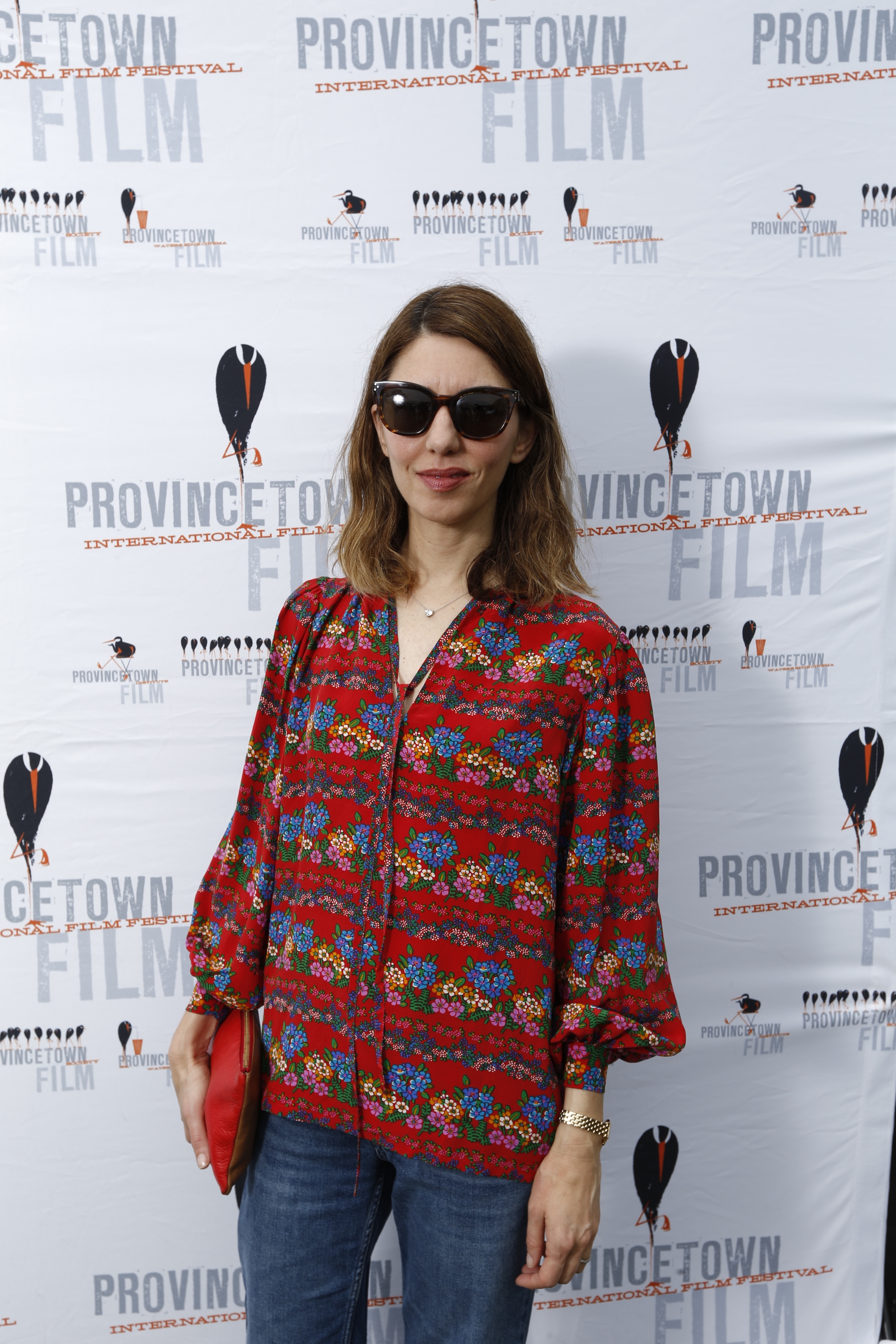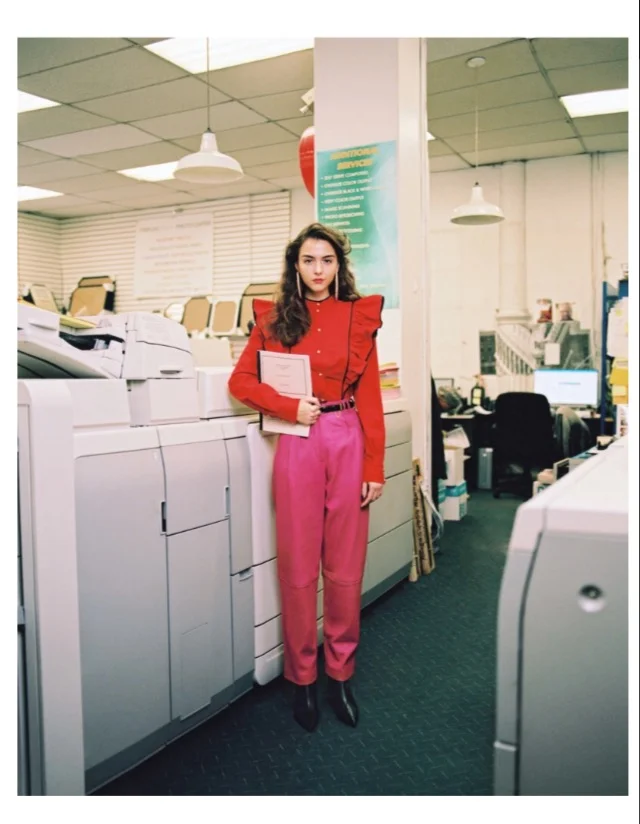The Quiet Storms of Sofia Coppola | Interview Magazine
PHOTO COURTESY OF ROB NITSCH/PROVINCETOWN INTERNATIONAL FILM FESTIVAL.
by Julia Bozzone
Filmmaker Sofia Coppola is known for the dreamy quality of her visuals, awash in emotion and atmosphere. At a special talk at the Provincetown International Film Festival last week, where she was honored for her body of work, director John Waters asked the 46-year-old Coppola if she could imagine directing a movie she didn’t write. “I can’t,” she replied. “When people send me scripts occasionally, I just can’t even imagine it. The whole [moviemaking process] starts with daydreaming about something.”
Coppola’s new movie, The Beguiled, is the second film adapted from Thomas Cullinan’s 1966 novel set during the Civil War. The intrigue begins when Corporal John McBurney (Colin Farrell), a handsome, injured Union soldier enters the grounds of an all-girls school in the South, turning the lives of the students and teachers upside down. Coppola hadn’t seen the tawdry and overheated (but frankly enjoyable) 1971 movie The Beguiled starring Clint Eastwood until a couple years ago when her production designer Anne Ross told she had to see it and she needed to remake the movie.
“I wanted to show desire as something human, instead of something strange,” Coppola tells us earlier that same day when we sit down on the porch of The Lands End Inn to discuss the film. It’s certainly a different approach than that of Don Siegel. “The Beguiled is … not a picture for women, but about them,” Siegel once said of his lurid adaptation. “Women are capable of deceit, larceny, murder, anything … Any young girl who looks perfectly harmless is capable of murder.”
Coppola explains that she never wanted to remake Siegel’s film. Instead, she was drawn to exploring the premise of a group of cloistered Southern women who hadn’t been around a man in a long time from a feminine perspective. “The Don Siegel movie is really from this man’s point of view,” she says. “I was interested in connecting to the female characters and to how [the events] affect them. The whole picture is really from their point of view.”
Cullinan’s book is also told from the women’s perspective—each chapter features a different woman telling the story—but Coppola’s adaptation is loose. “It’s very pulpy, it’s not great literature,” she notes. “But I would go back to it and get more information. There was this slave character in the book who was really this corny, stereotypical voice and I just took that character out. There was an incest storyline. I took out all the things that I felt weren’t connected with what I wanted to talk about.”
Coppola’s goal, throughout, seems to be to make her characters believable and true to life from a psychological standpoint—for us to understand how this operatic story could have unfolded. We mention the scene in her film where the women and girls gather around a piano and sing for McBurney because it typifies her portrayal of desire in The Beguiled. It features a striking sequence of images, in which the viewer sees the long-sequestered female characters from the corporal’s perspective. An array of women and girls in pastel-colored dresses stand across the room from him, giving him coy, seductive looks, and sidelong glances. “Oh yeah. I love that moment!” she exclaims. “It’s so funny and weird when you see them all together [looking at him].”
In Coppola’s version, the schoolteacher Edwina (Kirsten Dunst) is demure and dutiful, with a slightly wilted quality and a dim light in her eyes. “I thought this was sort of her last chance to have a mature woman’s life,” Coppola says. “She’s stuck at this girls’ school, and she puts all her hope on this guy. To me, she has a lot of hope, but it is, in the end, hopeless for her.” In Siegel’s movie, Edwina appears only slightly older than the girls at the school, and seems to function almost like a student teacher at the seminary, whereas the age difference between Coppola’s Edwina and her pupils is noticeable. (Dunst is 35; Elle Fanning, who plays a flirtatious older student, is 19.) “I think it makes it sadder, because it’s her last chance—that moment,” Coppola answers. “She was coming of age when there was no possibility of any men around.”
Coppola has arresting, almond-shaped eyes and she maintains eye contact throughout our conversation, never once diverting her attention. Her demeanor is relaxed and she has a sense of humor, but her serious eyes convey her intelligence and depth. Sometimes she speaks so quietly that we can’t discern what she is saying.
When we ask why she chose to have Colin Farrell use his real-life accent, unaware that his character was an Irish immigrant in the novel, she goes out of her way to avoid pointing out our ignorance. “When I met him, I thought, ‘He’s so charming with his accent,'” she explains. “And then in the book, he’s an Irish immigrant, so I thought, ‘Oh, it’d be cool to have him play it like the fictional character.’ And also, I thought it would make him more exotic to the women.”
When Coppola won her Oscar for best original screenplay for Lost in Translation, she mentioned some of the filmmakers who inspired her, like Michelangelo Antonioni and Wong Kar-wai. We ask which female filmmakers inspired her when she was growing up. “Jane Campion has always been a big hero of mine,” Coppola says. “You know, she made The Piano [1993] and was part of international cinema, and it made a big impression on me to see her as a strong female voice in film when I was around a lot of macho guys.”
And what about female filmmakers from the ’60s or ’70s?
“Chantal Akerman made a big impression on me. When I was working on Somewhere, I was really influenced by her work.”
Coppola has long been recognized as a master of mood, and some fans may be disappointed that The Beguiled doesn’t linger a little longer in its shots, that its editing seems clipped and deeply in service to the story. But Coppola still thinks in terms of images. Though she conceives and writes all of her movies herself, she is, above all, a visual storyteller. When we tell her that we love the shots of the female characters seen from outside the grounds of the school, she thanks us, before adding a remark that harkens back to her first feature film, The Virgin Suicides (1999): “I had that image of them stuck behind the gate when I was writing it.”
“And I loved the idea of all this sexual repression brimming under the surface in the heat of the south,” she muses, “and getting into that whole mood.”
“But I felt that in your movie the characters seemed, more than anything, lonely,” we reply. “In the Don Siegel movie, they were—”
“Nuts,” Coppola says.
“Yeah, it was much more primal. In yours, it was—”
“More emotional,” Coppola murmurs. “I was trying to think about what it was like for them. I don’t think Don Siegel was thinking about that.”
June 19, 2017
Editor: Emma Brown
This piece was originally published on interviewmagazine.com.








